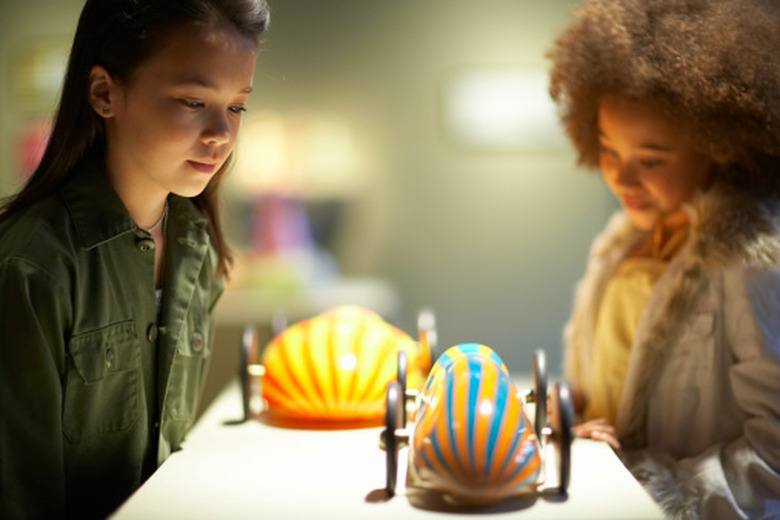Fifth Grade Activities On Force & Motion
Sure, force and motion are basic scientific principles that are often covered in the fifth grade. But they don't need to be boring or taught by memorization. Force and motion inherently involve movement; anything that moves will get students involved in their learning. Use activities to teach the basic force and motion concepts.
Roll 'Em
Roll 'Em
Use an inclined plane and balls of various masses and sizes. Measure the speed of each ball as it is rolled down the ramp by timing it. See how far it rolls and how fast it crosses a pre-determined finish line. Make adjustments to the experiment by varying the slope of the inclined plane either steeper or flatter and measure the ball's speed and distance travelled. Next, use different sizes of balls — from basketballs to golf balls — and see the difference in speed and distance. Determine each ball's mass and see if that affects distance travelled. Allow the students to use principles of inertia, gravity and friction to explain their results.
Coaster
Coaster
Fifth grade students can expand on their experiments rolling balls and use the information they've gained about mass, inertia and friction to construct a roller coaster for marbles or other small balls. Have the students explain what is happening and what problems they encounter. Have them explain how they solved the problems and why their solutions worked.
What a Drag
What a Drag
Force puts an object into motion. Have students attach a string to a small toy car. Each student's car should be approximately the same size for comparison purposes, or you can weigh each to determine mass before you begin. These cars can be constructed from kits, if you have the budget, or each student can bring a car. Have students pull the string to add force to the object and then observe what happens. Discuss net force on the object and talk about what causes the cars to stop. Set up barriers to stop the cars at the end of the run and discuss what forces are at work. Discuss Newton's laws of motion and how they apply to this experiment.
Plane as Day
Plane as Day
In a variation on the first experiment, use an inclined plane at various heights. Construct a plane with a book, a piece of wood, some cardboard, wooden blocks or any other long, flat object. Choose a variety of household items, such as an eraser, a crumpled ball of paper, a pencil or a paper clip. Predict how they will roll down the plane — which will be fastest and slowest, which will not roll and which will have trouble. Explain predictions. Then conduct the experiment and see which hypotheses were correct. Explain the results in terms of laws of motion, inertia, force and friction.
Cite This Article
MLA
Murdock, Rachel. "Fifth Grade Activities On Force & Motion" sciencing.com, https://www.sciencing.com/fifth-grade-activities-on-force-motion-12749149/. 3 May 2011.
APA
Murdock, Rachel. (2011, May 3). Fifth Grade Activities On Force & Motion. sciencing.com. Retrieved from https://www.sciencing.com/fifth-grade-activities-on-force-motion-12749149/
Chicago
Murdock, Rachel. Fifth Grade Activities On Force & Motion last modified March 24, 2022. https://www.sciencing.com/fifth-grade-activities-on-force-motion-12749149/
